Training your hamstrings is a key part of strengthening and trimming your legs. Whether you are a seasoned workout veteran or devising your first training plan, the exercises below will help you meet your fitness goals.
world greatest stretch
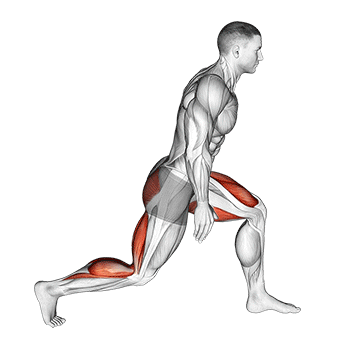
Begin in a high plank position, with your hands directly under your shoulders and your body forming a straight line from your head to your heels.
Step your right foot forward and place it on the outside of your right hand. Try to bring your foot as close to your hand as possible, keeping your right knee bent at a 90-degree angle.
Lower your right elbow to the ground, or as close as you can get it, next to your right foot. Hold this position for a few seconds to feel a stretch in your right hamstring and hip.
Next, rotate your upper body to the right and extend your right arm towards the ceiling. Look up towards your right hand as you do this. Hold this position for a few seconds to feel a stretch in your torso and chest.
Return your right hand to the ground and step your right foot back to return to the high plank position.
Repeat the same steps on the left side to complete one rep.
Perform this exercise for a total of 5-10 reps, alternating sides. Remember to keep your core engaged and your body in a straight line during the high plank position.
This exercise, known as the world's greatest stretch, is a great way to stretch your hamstrings, hips, torso, and chest all at once. It also helps to improve your balance and coordination.
standing single leg curl
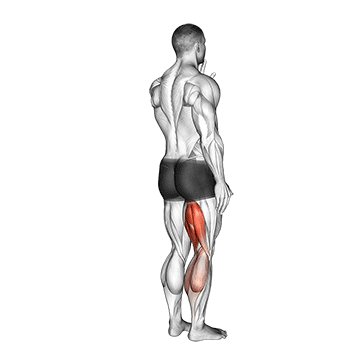
To perform the standing single leg curl, start by standing upright with your feet hip-width apart. Keep your arms relaxed at your sides or place your hands on your hips for balance.
Shift your weight onto your right foot, keeping your core engaged for stability. Slowly lift your left foot off the ground, bending your knee. The goal is to bring your heel as close to your buttocks as possible, mimicking a curling motion.
Ensure your thighs remain parallel to each other during the movement and avoid leaning forward or backward. Hold this position for a moment, feeling the contraction in your left hamstring.
Slowly lower your left foot back to the ground, maintaining control throughout the movement. This completes one repetition.
Repeat the exercise for your desired number of repetitions, then switch to your right leg. Remember to keep your movements slow and controlled, focusing on the contraction in your hamstrings.
No equipment is needed for this exercise, as it uses your body weight for resistance. However, for an added challenge, you can hold a dumbbell in the hand opposite to the leg being curled.
single leg platform slide
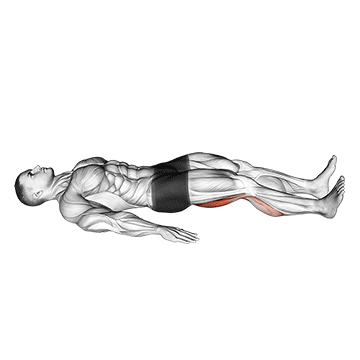
To perform the Single Leg Platform Slide, you'll need a smooth surface and a towel or a pair of socks.
1. Begin by standing upright with your feet hip-width apart. Place your right foot on the towel or sock, and keep your left foot firmly planted on the ground. This is your starting position.
2. Slowly bend your left knee and push your hips back while sliding your right foot forward. Keep your chest up and your back straight. Your left thigh should be parallel to the ground, and your right leg should be fully extended in front of you.
3. Pause for a moment, then push through your left heel to stand back up and slide your right foot back to the starting position.
4. Repeat this movement for your desired number of repetitions.
5. Once you've completed your set, switch legs and repeat the exercise with your left foot on the towel or sock and your right foot firmly planted on the ground.
Remember to keep your core engaged throughout the exercise to maintain balance and stability. This exercise primarily targets your hamstrings, but it also works your glutes and core.
self assisted inverse leg curl (on floor)
_Thighs_360.gif)
1. Start by kneeling on a soft surface like a yoga mat or carpeted floor. Your knees should be hip-width apart and your toes should be pointed behind you.
2. Cross your arms over your chest or place them at your sides, whichever is more comfortable for you.
3. Slowly lean forward, keeping your hips and thighs in line with your torso. Your body should form a straight line from your knees to your head.
4. As you lean forward, use your hamstrings to control your descent. Try to resist the pull of gravity as much as possible.
5. Once your torso is parallel to the floor, use your hands to gently assist yourself back to the starting position.
6. Repeat this movement for the desired number of repetitions.
Remember to keep your core engaged throughout the exercise to protect your lower back. Also, ensure that your movements are slow and controlled to maximize the effectiveness of the exercise.
self assisted inverse leg curl
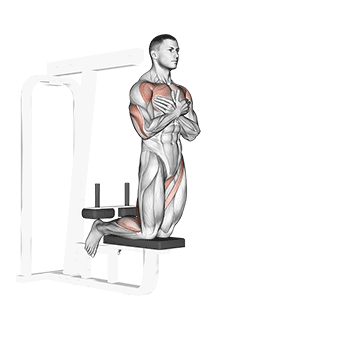
To perform the self-assisted inverse leg curl, start by finding a flat, non-slip surface. You will be using your body weight for this exercise, so no additional equipment is needed.
1. Begin by kneeling on the floor. Your knees should be hip-width apart. Place your hands on your hips or extend them out in front of you for balance.
2. Slowly lean back, keeping your body straight from your knees to your shoulders. Your goal is to lower your body as far as you can while maintaining control and without causing discomfort in your knees.
3. Once you've leaned back as far as you can, use your hamstrings to pull yourself back up to the starting position. Make sure to keep your core engaged and your body straight throughout the movement.
4. Repeat this exercise for your desired number of repetitions.
Remember to keep the movement slow and controlled, focusing on the contraction of your hamstrings. If you find the exercise too challenging, you can use your hands to assist you by placing them on the floor for support as you lean back and pull yourself up.
self assisted inverse leg curl

To perform the self-assisted inverse leg curl, start by finding a flat, non-slip surface. You will be using your body weight for this exercise, so no additional equipment is needed.
1. Begin by kneeling on the floor. Your knees should be hip-width apart. Place your hands on your hips or extend them out in front of you for balance.
2. Slowly lean back, keeping your body straight from your knees to your shoulders. Your goal is to lower your body as far as you can while maintaining control and without causing discomfort in your knees.
3. Once you've leaned back as far as you can, use your hamstrings to pull yourself back up to the starting position. Make sure to keep your core engaged and your body straight throughout the movement.
4. Repeat this exercise for your desired number of repetitions.
Remember to keep the movement slow and controlled, focusing on the contraction of your hamstrings. If you find the exercise too challenging, you can use your hands to assist you by placing them on the floor for support as you lean back and pull yourself up.
seated wide angle pose sequence
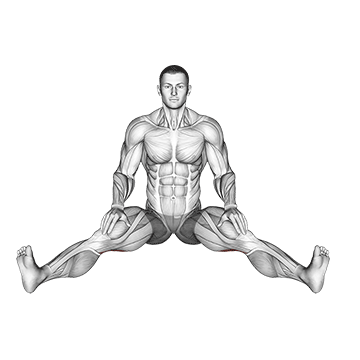
1. Begin by sitting on the floor with your legs extended in front of you. If you find it difficult to sit upright, you can sit on a folded blanket or yoga block to elevate your hips.
2. Slowly open your legs out to the sides as wide as comfortably possible. The inside of your knees should be facing the ceiling.
3. Flex your feet and press through your heels. Keep your toes and knees pointed up towards the ceiling.
4. Sit up tall, lengthening your spine. Keep your back straight and avoid rounding your shoulders.
5. Inhale deeply, and as you exhale, slowly lean forward from your hips, keeping your spine long.
6. Extend your arms in front of you, palms facing each other. If you can, reach for your toes or ankles. If not, just rest your hands on the floor.
7. Hold this pose for 5-10 breaths, or as long as comfortable.
8. To come out of the pose, slowly walk your hands back towards your body and use your hands to gently close your legs.
9. Repeat this sequence 2-3 times.
Remember to breathe deeply throughout the exercise and never force your body into a position that causes pain. This exercise is great for stretching your hamstrings and improving flexibility.
runners stretch
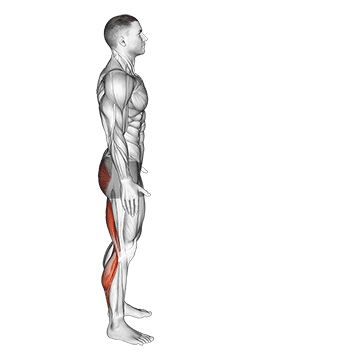
To perform the runners stretch, start by standing tall with your feet hip-width apart.
Step your right foot forward about two feet in front of your left foot. Keep your right foot flat on the ground and your left heel lifted.
Bend your right knee and push your hips back, as if you're about to sit in a chair. Keep your back straight and your chest lifted.
Reach your hands towards your right foot, either resting them on your shin or on the ground on either side of your foot, depending on your flexibility. You should feel a stretch in the back of your right leg, specifically in your hamstring.
Hold this position for 30 seconds to 1 minute, then switch sides and repeat with your left foot forward.
Remember to breathe deeply and evenly throughout the stretch, and to keep your movements slow and controlled. Don't force the stretch - if you feel any pain, back off a bit until the stretch feels comfortable.
This exercise can be repeated 2-3 times on each side.
leg up hamstring stretch
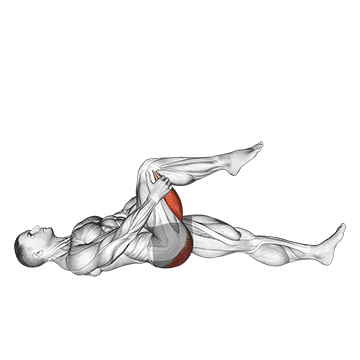
To perform the leg up hamstring stretch, start by standing upright with your feet hip-width apart. This exercise requires no equipment, just your body weight.
1. Lift your right leg and place it on an elevated surface. This could be a step, a bench, or any stable surface that is about knee height. If you're a beginner, you might want to start with a lower surface. Your leg should be straight but not locked at the knee.
2. Keep your left foot flat on the ground, and your left leg straight. Make sure both of your hips are facing forward, in line with each other.
3. Slowly lean forward from your hips, keeping your back straight. Reach towards your right foot with both hands. You should feel a stretch in the back of your right thigh.
4. Hold this position for about 30 seconds, breathing deeply and relaxing into the stretch.
5. Slowly come back up to standing position.
6. Repeat the stretch with your left leg up.
Remember, the goal is to feel a gentle stretch, not pain. If you feel any discomfort, ease back on the stretch. As your flexibility improves, you can try to reach further towards your foot, or use a higher surface for your leg.
kick out sit
1. Start by sitting on the floor with your legs extended in front of you and your hands resting on the floor by your sides for support.
2. Lean back slightly, engaging your core and maintaining a straight back. This is your starting position.
3. Bend your knees and pull them towards your chest. As you do this, lean your upper body slightly forward but ensure your back remains straight.
4. Once your knees are close to your chest, extend your legs out in front of you in a swift 'kicking' motion. As you kick out, lean your upper body back to its original position.
5. After fully extending your legs, pull your knees back towards your chest and lean forward again, returning to the starting position.
6. Repeat this motion for your desired number of repetitions. Ensure to keep your movements controlled and your core engaged throughout the exercise to effectively target your hamstrings.
Remember, this exercise uses your body weight as resistance, so it's important to focus on form and control rather than speed.
inverse leg curl (on pull-up cable machine)
_Thighs_360.gif)
To perform the inverse leg curl on a pull-up cable machine, follow these steps:
1. Position yourself in front of the pull-up cable machine. Make sure the cable is at the lowest setting.
2. Kneel down on the floor and secure your feet under the cable. Your toes should be pointing towards the machine.
3. Keep your body straight from your knees to your head. This will be your starting position.
4. Slowly lower your body forward, bending at the knees. Keep your body straight and your core engaged.
5. Lower yourself as far as you can while maintaining control and without letting your body touch the floor.
6. Use your hamstrings to pull yourself back up to the starting position. Make sure to keep your body straight and avoid using your back to pull yourself up.
7. Repeat this movement for the desired number of repetitions.
Remember to keep your movements slow and controlled, focusing on the contraction of your hamstrings. Avoid using your back or hips to pull yourself up, as this can lead to injury.
inverse leg curl (bench support)
_Thighs_360.gif)
1. Start by finding a sturdy bench or platform that is about knee height. Ensure it is stable and won't move during the exercise.
2. Stand facing the bench and place your ankles on top of it. Your toes should be pointing downwards and your body should be straight from your head to your ankles.
3. Lean forward from your ankles, keeping your body straight. Your hands should be out in front of you, ready to catch your weight as you lean forward.
4. Continue leaning forward until your body is parallel to the ground. Your hands should be directly under your shoulders, supporting your weight.
5. Push your body back up using your hands, but the main force should come from your hamstrings. Try to keep your body straight as you push back up.
6. Continue pushing until you are back in the starting position, with your body straight from your head to your ankles.
7. Repeat this exercise for the desired number of repetitions. Remember to keep your movements slow and controlled, focusing on the contraction of your hamstrings.
8. To increase the difficulty of this exercise, you can add a pause at the bottom of the movement, or try to use less of your hands when pushing back up.
Remember to keep your core engaged throughout the exercise to protect your lower back. If you feel any pain in your lower back, stop the exercise and consult with a fitness professional.
hamstring stretch
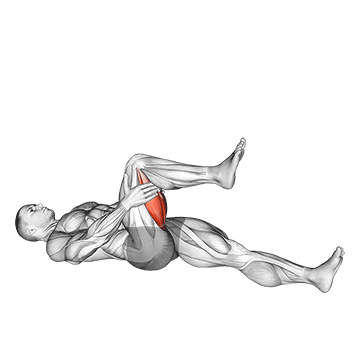
1. Stand upright with your feet hip-width apart. This is your starting position.
2. Step one foot forward, keeping it flat on the ground. The heel of your back foot should be lifted, with your toes pointing forward.
3. Keep your back straight and slowly bend forward from your hips, not your waist. You should feel a stretch in the hamstring of your front leg.
4. Reach your hands towards the toes of your front foot. If you can't reach your toes, just go as far as you can while maintaining a straight back. You should feel a stretch in your hamstring, not pain.
5. Hold this position for 15-30 seconds, then slowly rise back to the starting position.
6. Repeat the stretch with the other leg forward.
7. Do this exercise 2-3 times on each leg.
Remember to breathe normally throughout the stretch and maintain a straight back to avoid injury. If you feel any pain, stop the exercise immediately.
glute-ham raise
1. Start by finding a suitable place where you can anchor your feet. This could be under a heavy piece of furniture or with the help of a workout partner.
2. Kneel on the floor or a mat with your feet anchored securely under the anchor point. Your knees should be hip-width apart.
3. Engage your core and keep your body in a straight line from your knees to your head. This is your starting position.
4. Slowly lower your torso forward, maintaining a straight line from your knees to your head. Use your hamstrings and glutes to control your descent.
5. Continue lowering your body until you're almost parallel to the floor.
6. Now, use your hamstrings and glutes to pull your body back up to the starting position.
7. Repeat this movement for the desired number of repetitions.
Remember to keep your movements slow and controlled, focusing on the muscle contraction and not on the movement itself. Also, ensure to keep your back straight throughout the exercise to avoid any injuries.
No tags for this post.
